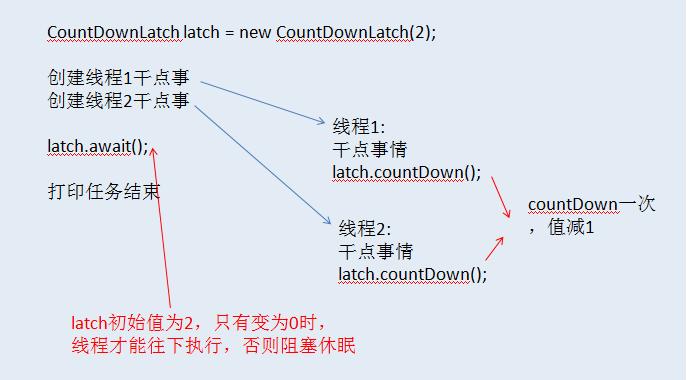
linux的多线程同步方法
时间:2023-05-29 来源:网络 人气:
多线程编程已经成为现代计算机系统中不可或缺的一部分。在Linux系统中,多线程编程是一个非常重要的话题。由于多个线程可以同时访问共享资源,因此数据竞争是一个非常常见的问题。本文将介绍Linux中使用的多种同步方法,以及如何选择适当的同步方法来解决数据竞争问题。
1.互斥锁
互斥锁是最常用的同步方法之一。它允许只有一个线程访问共享资源。当一个线程获得了互斥锁时,其他线程将被阻塞,直到该线程释放锁为止。
下面是一个简单的示例程序:
c
#include<pthread.h>
pthread_mutex_tmutex;
void*thread_func(void*arg)
{
pthread_mutex_lock(&mutex);
//访问共享资源
pthread_mutex_unlock(&mutex);
returnNULL;
}
intmain()
{
pthread_tthread1,thread2;
pthread_mutex_init(&mutex,NULL);
pthread_create(&thread1,NULL,thread_func,NULL);
pthread_create(&thread2,NULL,thread_func,NULL);
pthread_join(thread1,NULL);
pthread_join(thread2,NULL);
pthread_mutex_destroy(&mutex);
return0;
}
在上面的示例程序中,我们创建了两个线程,它们都调用了`thread_func`函数来访问共享资源。在`thread_func`中,我们使用了互斥锁来保护共享资源。这样,当一个线程正在访问共享资源时,另一个线程将被阻塞。当第一个线程释放锁时,第二个线程才能继续执行。
2.读写锁
读写锁是一种特殊的锁,它允许多个线程同时读取共享资源,但只允许一个线程写入共享资源。这种锁适用于读取操作比写入操作频繁的情况。
下面是一个简单的示例程序:
c
#include<pthread.h>
pthread_rwlock_trwlock;
void*read_thread_func(void*arg)
{
pthread_rwlock_rdlock(&rwlock);
//读取共享资源
pthread_rwlock_unlock(&rwlock);
returnNULL;
}
void*write_thread_func(void*arg)
{
pthread_rwlock_wrlock(&rwlock);
//写入共享资源
pthread_rwlock_unlock(&rwlock);
returnNULL;
}
intmain()
{
pthread_tread_thread1,read_thread2,write_thread;
pthread_rwlock_init(&rwlock,NULL);
pthread_create(&read_thread1,NULL,read_thread_func,NULL);
pthread_create(&read_thread2,NULL,read_thread_func,NULL);
pthread_create(&write_thread,NULL,write_thread_func,NULL);
pthread_join(read_thread1,NULL);
pthread_join(read_thread2,NULL);
pthread_join(write_thread,NULL);
pthread_rwlock_destroy(&rwlock);
return0;
}
在上面的示例程序中,我们创建了两个读线程和一个写线程。读线程调用了`read_thread_func`函数来读取共享资源,写线程调用了`write_thread_func`函数来写入共享资源。在这里,我们使用了读写锁来保护共享资源。当一个线程正在读取共享资源时,其他读线程也可以同时访问该资源。但是,当一个线程正在写入共享资源时,所有其他线程都将被阻塞。
3.条件变量
条件变量允许多个线程等待某个特定条件的发生。当条件不满足时,线程可以进入睡眠状态,并释放锁。当条件满足时,它们将被唤醒并重新获得锁。
下面是一个简单的示例程序:
c
#include<pthread.h>
pthread_mutex_tmutex;
pthread_cond_tcond;
void*thread_func(void*arg)
{
pthread_mutex_lock(&mutex);
//等待条件变量
pthread_cond_wait(&cond,&mutex);
//条件满足后继续执行
pthread_mutex_unlock(&mutex);
returnNULL;
}
intmain()
{
pthread_tthread;
pthread_mutex_init(&mutex,NULL);
pthread_cond_init(&cond,NULL);
pthread_create(&thread,NULL,thread_func,NULL);
//满足条件后发送信号
pthread_cond_signal(&cond);
pthread_join(thread,NULL);
pthread_mutex_destroy(&mutex);
pthread_cond_destroy(&cond);
return0;
}
在上面的示例程序中,我们创建了一个线程,它调用了`thread_func`函数来等待条件变量。在主线程中,我们使用`pthread_cond_signal`函数来满足条件并发送信号。这将唤醒等待条件变量的线程。
4.自旋锁
自旋锁是一种特殊的锁,它允许线程忙等待锁的释放。当一个线程尝试获取自旋锁时,如果该锁已经被其他线程占用,则该线程将进入忙等待状态,直到该锁被释放。
下面是一个简单的示例程序:
c
#include<pthread.h>
pthread_spinlock_tspinlock;
void*thread_func(void*arg)
{
pthread_spin_lock(&spinlock);
//访问共享资源
pthread_spin_unlock(&spinlock);
returnNULL;
}
intmain()
{
pthread_tthread1,thread2;
pthread_spin_init(&spinlock,0);
pthread_create(&thread1,NULL,thread_func,NULL);
pthread_create(&thread2,NULL,thread_func,NULL);
pthread_join(thread1,NULL);
pthread_join(thread2,NULL);
pthread_spin_destroy(&spinlock);
return0;
}
在上面的示例程序中,我们创建了两个线程,它们都调用了`thread_func`函数来访问共享资源。在这里,我们使用了自旋锁来保护共享资源。当一个线程正在访问共享资源时,另一个线程将进入忙等待状态,直到该锁被释放。
总结
本文介绍了Linux中使用的多种同步方法,包括互斥锁、读写锁、条件变量和自旋锁。这些同步方法可以有效地解决多线程编程中的数据竞争问题。但是,在选择适当的同步方法时,需要根据具体的应用场景进行选择。希望本文对您有所帮助。

tokenpocket最新版:https://cjge-manuscriptcentral.com/software/3775.html
相关推荐
教程资讯
教程资讯排行

系统教程
- 1 安卓8系统wifi断流,安卓8系统WiFi断流问题解析与解决攻略
- 2 安卓系统8.1oppo,性能升级与用户体验革新
- 3 安卓系统地震预警在哪,地震预警信息在安卓系统中的生成过程概述
- 4 安卓系统更新 文件路径,安卓系统更新文件路径解析与更新概述
- 5 安卓系统窗口怎么调,只需将`subtitle`变量的值替换为相应的字符串即可。
- 6 安卓系统可以定位,安卓系统定位功能解析与应用
- 7 安卓插件调用系统音效,Android插件轻松调用系统音效功能解析
- 8 安卓怎么装win系统,教你如何安装Windows系统
- 9 钉钉3安卓系统,功能升级与用户体验优化全面解析
- 10 安卓平台windows系统下载,轻松实现跨平台操作
-
标签arclist报错:指定属性 typeid 的栏目ID不存在。












